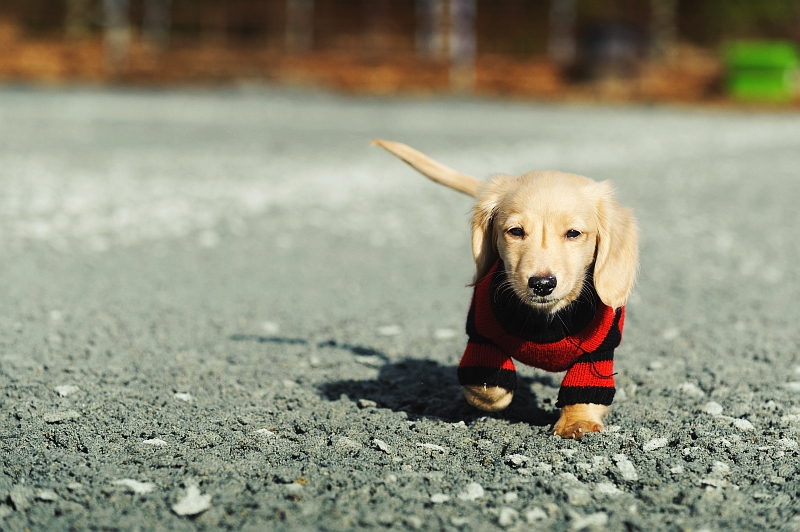Not everywhere you walk will be over fresh sod smelling delightfully of spring. Some places you and your dog venture may pose a variety of challenges and discomforts that you will want to be aware of. In the winter, a dog’s feet might freeze on the cold ground, or get cut by icy pebbles, and the summer may cause a pup’s feet to burn on the sizzling pavement, or accidentally get their toes covered in melted goo, tar or sap. In every season there are always things to look out for, wherever you and dog may wander.
Dangers On The Ground
City streets/Asphalt: Because thousands of people cross city streets and sidewalks, the pavement is one horrific mess of germs and grime. While walking your dog in the city, a few of the primary things to keep your eyes out for are broken glass, garbage (whether it is rotten food, plastic wrappers, tin foil bits, etc.) make sure your dog does not go poking his nose in something that may either make him sick, or will be hard to clean off later. Though it might not seem likely, there is also a surprising amount of bird and rodent feces in city areas, as well as spilled liquid, oils, run off and sticky stains. Make sure you give your dog’s paws a good wipe-down with antibacterial wipes when you get back home.
Sand: A trip to the beach is usually one of the most relaxing outings a pet-owner can take with their pooch. How dangerous really can simple sand be? Unfortunately, there are a few things to look out for when you and your dog head to the coast. The surface of the shore may have an abundance of pebbles, broken shells, and sharp crab claws, or poky sticks. When stepped on, these rough edges can puncture or bruise soft paws (especially those that are wet from the ocean). Additionally, sand can have little bugs and mites, and jelly fish have been known to wash up on the beach, stinging puppy toes that accidentally prance over them.
Grass: When dogs go on walks, they most frequently are over large grassy lawns at a park. Here, aside from the sharp sticks, pine cones, and tan bark, there also might be animal feces (which bring exposure to worms, etc.), and trash leftovers from other visitors. (This could consist of anything from broken water balloons, to plastic bags, broken glass bottles, plastic forks, tin cans, and chicken bones, etc.) In addition to this, parasites like fire ants, chiggers, ticks are also often stumbled upon at parks, depending on the region where you live.
Fields/Hiking grounds: Dogs that go running through fields run the risk of picking up ticks, or stepping on pointed bits of dry brush that may have thorns, burs and briars. These can not only wedge deep into the dog’s coat, but they can get caught between the toes, making it painful for the pup to move and walk. Many hiking grounds have dust/dirt and gravel paths, with little stones that may get caught in between toes or make a dog’s feet blistered and raw. Hikers should always be aware of snakes in the long grass, atop piles of dry sticks, or under cool rocks. There may also be stinging nettles along the trail, as well as poison oak and poison ivy, etc.
Whatever terrain you and your pup decide to trek across, make sure you are aware of the potential dangers a dog’s feet might face, and be prepared to soothe, disinfect and protect their paws as necessary afterwards.

